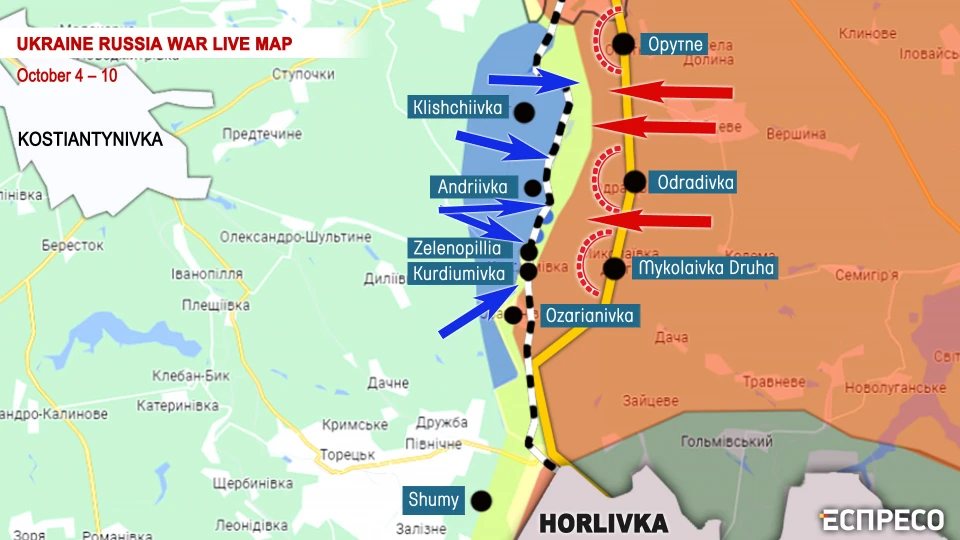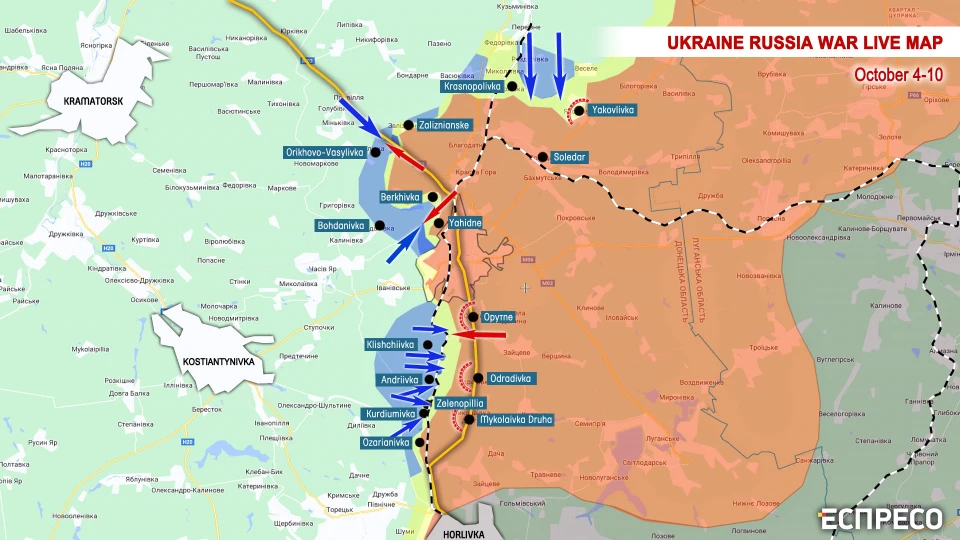
Ammunition will determine fighting pace in Ukraine during next year - military expert Serhiy Zgurets
There is evidence that the price of new European-made ammunition has skyrocketed. Before the active phase of the war, ammunition could be bought for about EUR 3 thousand, and now such ammunition costs up to EUR 5 thousand
About the ammunition in the arsenals of the Russian and Ukrainian armies
The good news is that on October 10, the German defense giant Rheinmetall announced that it has received another contract worth 1.2 billion euros to manufacture ammunition ordered by the German government. This ammunition will then be sent to the Ukrainian Armed Forces, although the contract is signed by the German government. We are talking about supplying Ukraine with 150 thousand rounds of ammunition. Part of it will be delivered this year, and the rest in 2024.
The question arises: is 150,000 ammunition a lot or not enough? It is believed that on average, the Armed Forces of Ukraine use 3 to 8 thousand 155 mm ammunition per day, or a maximum of 240 thousand per month. However, in certain areas, the intensity of artillery's use of ammunition is higher, particularly in the south. So far, Ukraine had been supplied with 2 million rounds of ammunition, and this was before the cluster munitions were provided.
What about Russia? According to some experts, the Russian forces use an average of 10 to 15 thousand large-caliber shells per day, or 450 thousand per month. But their use of these shells is decreasing. If we recall the previous stages of the fighting, in particular near Sievierodonetsk and during the first stage of the fighting near Bakhmut, it was reported that the Russian troops used 60 thousand rounds of ammunition per day, or almost 2 million per month. This is despite the fact that Russia can independently produce about 1.5 million rounds of ammunition with plans to produce up to 2 million rounds per year.
So, it can be stated that the amount of ammunition in the arsenals of the Russian army and the Ukrainian army will significantly affect the course of hostilities over the next year.
By the way, there is evidence that the price of new European-made ammunition has skyrocketed. Before the active phase of the war, ammunition could be bought for about 3 thousand euros, and now it costs up to 5 thousand euros. That is, we understand how much the cost of components has increased, and we see that the shortage provokes price increases. This will affect the story of the next year, where ammunition will be a key element that will determine the pace of hostilities on both sides. Of course, the Armed Forces are now actively using this ammunition on the battlefield.
Situation at the frontline
The Ukrainian Armed Forces continue their offensive in the Melitopol direction and south of Bakhmut, where Ukraine's troops are using the tactic of slow but steady advance.
On October 10, in the morning, the spokesman for the Eastern Military Group, Ilya Yevlash, said that on the southern flank of Bakhmut, the defenders are liberating hundreds of meters of temporarily occupied territories every day, but the Russian army is still resisting and moving reserves to these areas.
Andriy Babichev, a soldier of the 93rd Kholodnyi Yar Brigade, who is stationed near Bakhmut, said that heavy fighting continues in the direction of Klishchiivka, Andriivka and Kurdyumivka.

According to him, around Bakhmut and in other areas, the front line is static and not moving, but this does not mean that there are no battles there. The fighting takes place every day 24/7.

The serviceman noted that the Ukrainian Armed Forces continue their offensive near Andriivka and Klishchiivka. This week started quite well and the Defense Forces are making good progress. The Ukrainian troops have already crossed the railroad tracks and the fighting is going on far away from it. However, it is difficult to fight there because there are many landings where the enemy is stationed. In addition, Russian artillery is working closely. The invaders place their machine gun units on the landings' edge, which delays the advance of the Ukrainian infantry. But Ukraine's guys can see everything and destroy the enemies.
Babichev said that the infantry war is ongoing on both sides: neither tanks nor armored vehicles are being used. Whenever equipment appears, it is destroyed by artillery. Ukrainian soldiers are trampling every meter with their feet as they advance. Russian soldiers use different types of tactics. They can move in groups of 3-8 people, or they can come in a group of 60 at the same time, as happened a couple of days ago. Ukrainian soldiers defeated them well, but Russia is not running out of manpower. Currently, there is a problem on both sides with the evacuation of the wounded and dead, because the Russian troops shoot the crews that evacuate the guys. There are losses among medics. To understand, medics have to drag a wounded or killed person for about 3 kilometers and only then hand them over to an evacuation vehicle that is moving under hostile fire.
Oleksiy noted that mortars and artillery are heavily used in this area. The Russian troops have turned all their guns to Klishchiivka and Andriivka. There is much more enemy artillery, so it is difficult to work there. It is difficult for the Ukrainian Armed Forces to carry out dense counter-battery work because they lack long-range weapons. And Ukrainian artillery works exactly where the infantry needs to go, so we get everything there and everything works. But there are problems with the counter-battery. In addition, Russia often attacks at night or in the rain, so not all drones can control the situation. When it's night and raining, the invaders are moving brazenly, and when the weather is clear, we can see and control everything. But bad weather makes its own adjustments.
On the protection of military communications
Soldier Babichev added that Russia is jamming communications equipment, so Ukraine needs walkie-talkies that work under electronic warfare. There is also a need for repeaters for FPV drones that attach to the Mavic, which, flying under enemy EW, amplifies the signal and allows Ukraine's kamikaze drone to continue flying. Accordingly, the Ukrainian soldiers on the battlefield urgently need such protection against enemy electronic warfare.
Next, let's talk about the defense-industrial achievements of Ukrainian developers and manufacturers, namely the area of secure military communications. We are talking about a project called HIMERA, in which Ukrainian specialists create secure radio stations. On October 10, the Minister of Digital Transformation Mykhailo Fedorov loudly presented this development. It was a surprise for me because we had made arrangements with our next guest without knowing that Fedorov would make such additional publicity for this development.
Oleksiy Oliynyk, a representative of HIMERA, noted that the company works to create a great product, and the awards come on their own. The team discussed whether they needed to reach this level of publicity or whether they needed this additional recognition, as it was enough that the military was using this development. The previous guest, soldier Andriy Babichev, told us what is needed on the front line, and this is the main focus of the company's work.
A representative of HIMERA said that they are currently testing a modem that is the same development as the radiostation. This is a military-grade modem with good security, and it is completely built on commercial components. We can produce tens, hundreds, or even thousands of such modems every month. The idea behind this modem is that the pilot flying the copter is in a place that no one can know about. That is, the pilot can be located several hundred meters, or even kilometers, away from the point from which the drone is controlled. Then everything happens by a repeater, which means that the repeater can be a drone or other means that has a certain height, which is arranged on a mast. Due to the distance, the view, and the pilot's safe place, the drone can be guided up to the very last meters as it approaches the target. This way we protect the pilots, their location will not be determined by enemy intelligence.
Oliynyk noted that at the exhibition in London, HIMERA presented a more powerful military radio station that will operate at a considerable distance and also as a gateway between the company's stations and the Internet. This station can also serve as a repeater station for the same channels used by drones. It can connect to a local network or Wi-Fi, but this is the next stage of product development. Now we are combining the stations with modems to make everything as described by soldier Babichev.
Summarizing Mr. Babichev's words, I would say that we are already seeing secure modems that can increase the use of Ukrainian FPV drones on the battlefield.
- News














































